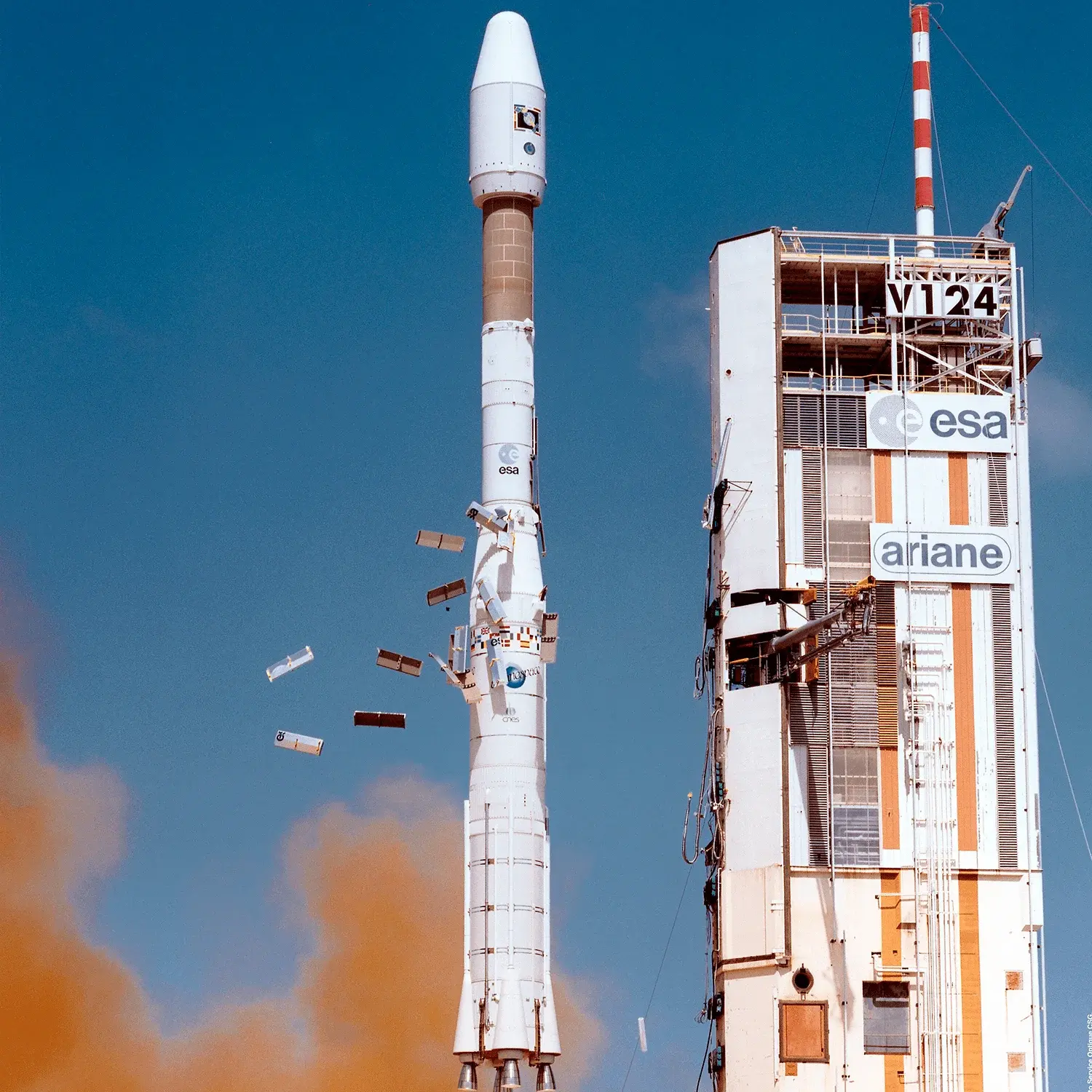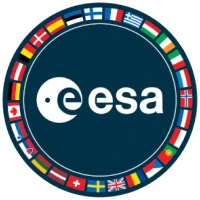ERS-1, Orbcomm-X & Rideshares
Launch Success
Liftoff Time (GMT)
01:46:00
Wednesday July 17, 1991
Mission Details
Launch Notes
Flight V44.
ERS-1
European remote sensing satellite (ERS) was the European Space Agency's first Earth-observing satellite programme using a polar orbit. The first satellite was launched on 17 July 1991 into a Sun-synchronous polar orbit at an altitude of 782–785 km. ERS-1 had various mission phases using 3-day, 35-day, and a 336-day repeat cycle. The 336-day mission (Geodetic Mission) allowed for accurate mapping of the Earth's bathymetry and geoid over the seas using the Radar Altimeter. ERS-1 failed on 10 March 2000, far exceeding its expected lifespan.
Sun-Synchronous Orbit
1 Payload
2,384 kilograms
Orbcomm-X
Orbcomm is a family of low Earth orbit communications satellites, operated by the American satellite communications company Orbcomm. As of July 2014, 51 such satellites have orbited Earth, with 50 still continuing to do so. Orbcomm-X, also known as Datacomm-X, was launched in 1991. It carried communications and GPS experiments. Initially, the spacecraft was reported healthy, but communication was lost after just one orbit.
Sun-Synchronous Orbit
1 Payload
22 kilograms
Oscar 22
UoSAT-5, also known as UoSAT-F, UO-22, and OSCAR 22, is a British satellite in Low Earth Orbit. It was built by Surrey Satellite Technology and launched into space in July 1991 from French Guiana. UoSAT-5 carries equipment that was similar to that on UoSAT-4, a similar satellite that failed in orbit 1 year previously. The satellite tested new technologies, including validating the performance of Gallium arsenide solar arrays.
Sun-Synchronous Orbit
1 Payload
50 kilograms
Tubsat-A
TUBSAT-A (Technische Universität Berlin Satellit A) is a cube of 38 cm side length and a mass of 35 kg. It was launched on 17 June 1991 on the Ariane ASAP structure from Kourou together with ERS 1 and three other microsatellites. Its sun-synchronous orbit has an altitude of 780 km and an inclination of 98°. The mission of TUBSAT-A is mostly technology demonstration. Experimental solar cells provide part of the energy needed, but standard cells are used on four sides of the cube. On the top, you can see two L-Band patch antennas of the satellite which are also experimental. A transputer chip (Kayser-Threde) is also tested for space environment qualification.
Sun-Synchronous Orbit
1 Payload
35 kilograms
SARA
SARA (Satellite Amateur de Radio-Astronomie or Satellite pour Astronomie Radio Amateur) carried a radio astronomy experiment designed to survey radioelectric emissions from Jupiter. SARA measured the radio waves transmitted by the largest planet in the solar system, Jupiter, at frequencies between 2-15 MHz. These frequencies can not be observed from the Earth, as they are blocked by the ionosphere. An earth-orbiting satellite beyond the ionosphere is ideally suited to receive and study these signals. The waves were expected to be strong enough to be received by omnidirectional antenna, thus no attitude control was required. SARA was an 0.45 m cube-shaped satellite built by the French Club ESIEESPACE. It featured six 10 m long, deployable antennas. Power was supplied by body-mounted solar cells. Shortly before launch, it was decided to add two other technological experiments on board. The hardware provides real-time telemetry of the temperature of SARA plus the battery's voltage. The onboard equipment receives radio waves between 2 and 15 MHz and can calculate their average amplitude over 150 seconds which constitutes useful information. Two of the six antennas are used to transmit the data to the ground station. During its projected 11-year mission, SARA supplemented information gathered by the Ulysses and Galileo spacecraft.
Sun-Synchronous Orbit
1 Payload
26 kilograms
Launch Site
Stats
Ariane 4
16th
Mission
4th
Mission of 1991
European Space Agency
35th
Mission
4th
Mission of 1991
1991
52nd
Orbital launch attempt

